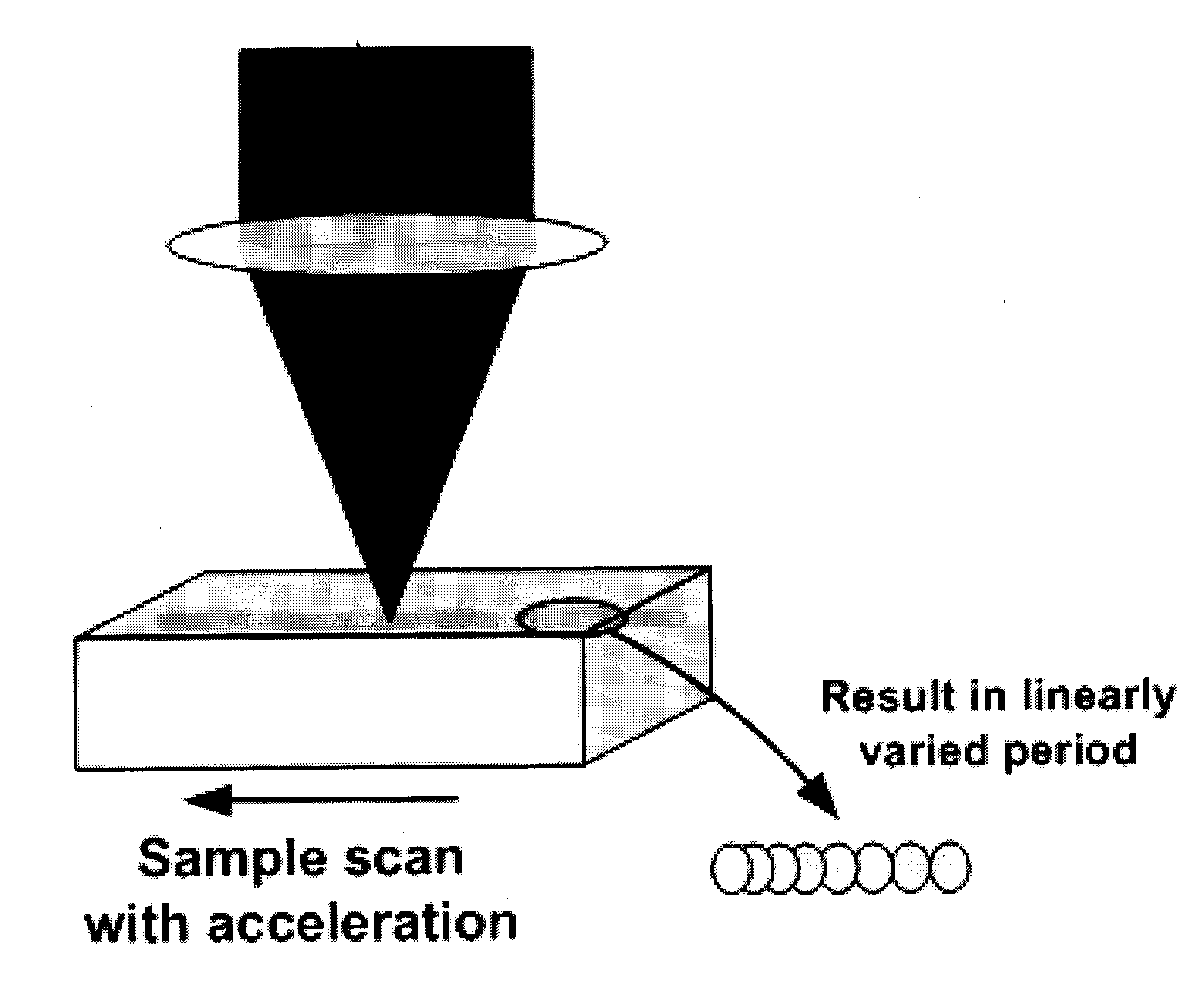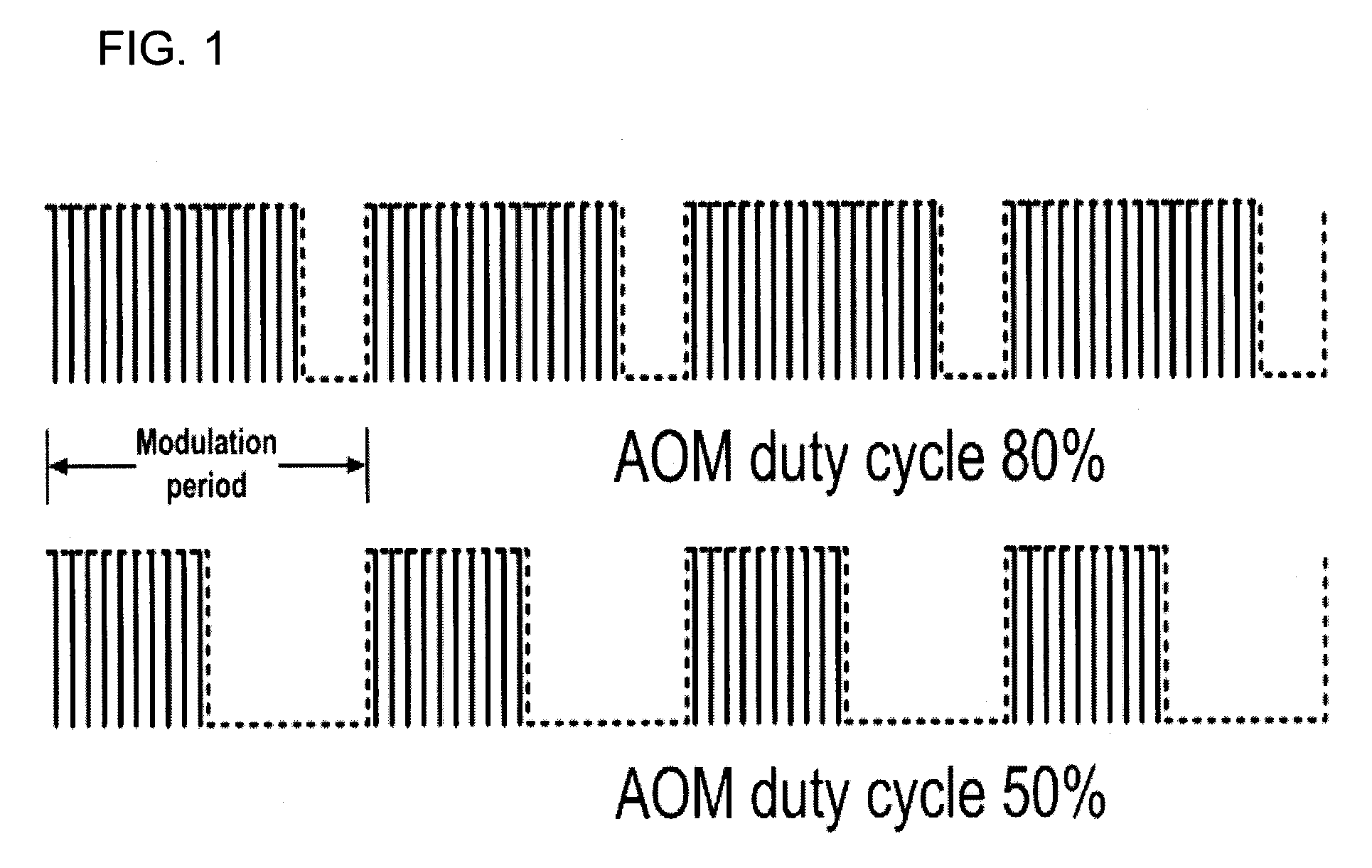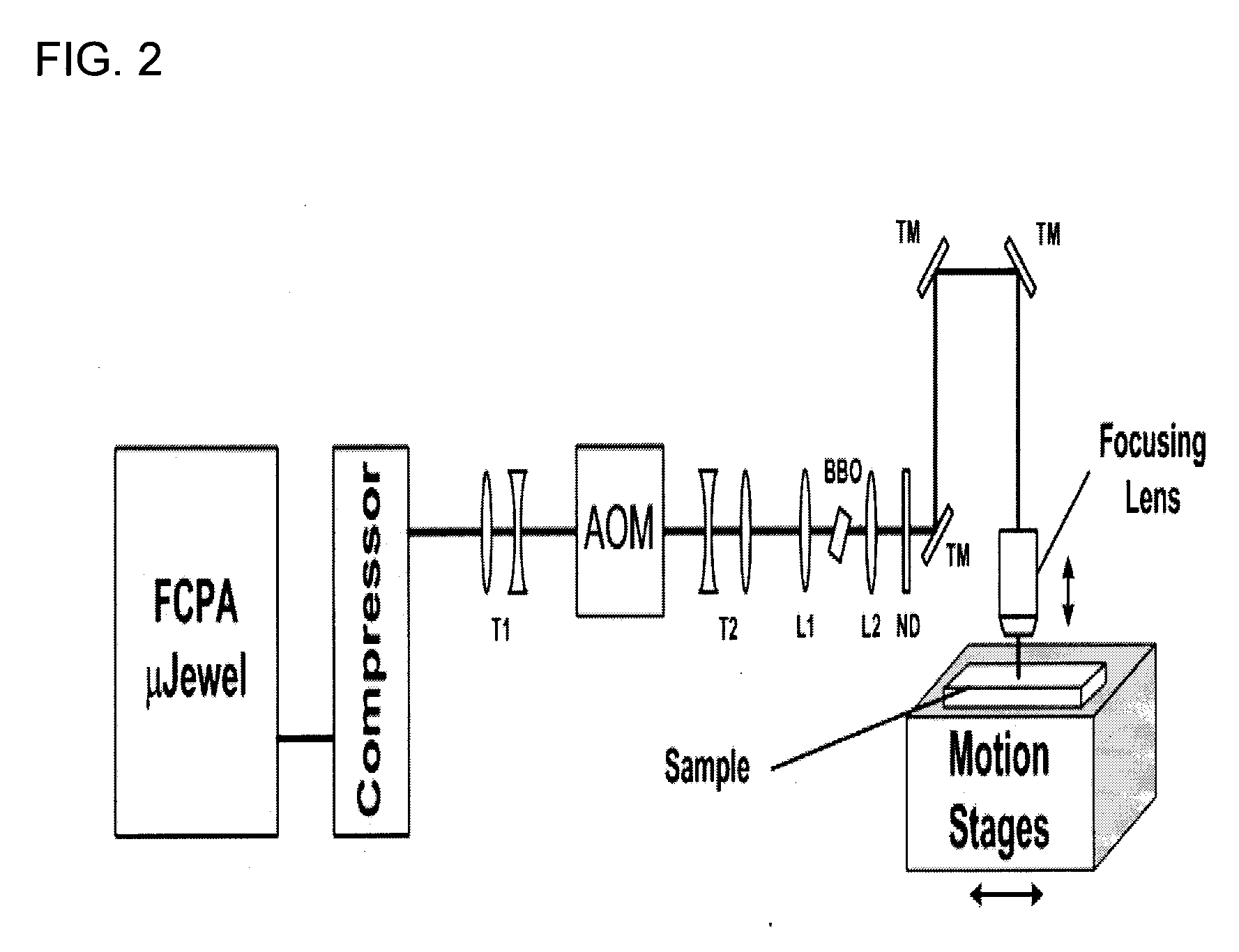Multipulse system for writing waveguides, gratings, and integrated optical circuits
a technology of integrated optical circuits and waveguides, applied in optics, instruments, optical elements, etc., can solve the problems of limited attempts to inscribe grating structures into laser-written waveguides, no evidence of applicability, and only successful techniques, so as to improve the accuracy and speed of fabrication. , the effect of reducing the cos
- Summary
- Abstract
- Description
- Claims
- Application Information
AI Technical Summary
Benefits of technology
Problems solved by technology
Method used
Image
Examples
example 1
[0110]A grating waveguide fabrication method and system to produce modulation of refractive index and / or other waveguide properties by periodic or modified periodic modulation of a energy source (e.g., a laser) was demonstrated. This method can be applied to both low and high repetition rate laser systems and continuous wave laser systems. Low-loss and high-strength Bragg grating waveguides were fabricated in fused silica glass with a commercial high-repetition rate, fiber-amplified laser. The method can easily be adapted to other laser sources and materials.
[0111]FIG. 2 illustrates a system in accordance with an embodiment of an aspect of the present invention. A commercial amplified fiber laser (IMRA America™, model λJewel-400) provides 1045 nm wavelength of ˜400 fs pulse duration from an external compressor, with tuneable repetition rate from 100 kHz to 5 MHz and with M2 beam quality value of ˜1.3. In the present example, a 500 kHz repetition rate was applied, but other frequenci...
example 2
[0129]This example is an extension of Example 1 which demonstrates the flexibility of the present GW formation method in controlling waveguide properties and integrating multiple GW devices to form highly stable optical systems.
[0130]FIG. 11 illustrates the transmission and reflection spectra of several grating waveguide devices formed in series in a straight line in bulk fused silica glass. Each waveguide section was 8 mm long and formed with an AOM modulation rate of 500 Hz and a fixed duty cycle of 60%, using laser exposure conditions similar to that described in Example 1. However, the scan speed was varied in three steps of ν=0.2643, 0.2661, and 0.2678 mm / s, yielding three distinct and separated Bragg resonances at λB=1523.1, 1538.3, and 1548.0 nm, that accurately track the expected relationship of λB=2neffΛ=2neffν / f. The grating strengths for all three resonances exceed 20 dB and provide sharp resonances of ˜0.3 nm spectral width (3 dB), indicating facile means for integration...
example 3
[0139]This example teaches the use of the 0th order diffraction beam from the AOM to form GWs with periodic changes in power level. The embodiment of FIG. 2 is applied with the 0th order diffraction beam of the AOM selected as in FIG. 3 to provide modulated pulse energy variable anywhere within a minimum of ˜45% to a maximum of 100% total laser energy per pulse. For the present case, a square modulation envelope was selected, set to 45% minimum and 100% pulse energy.
[0140]FIG. 4 demonstrates two examples of a similar case of 50% and 100% modulation of pulse energy with external AOM triggering set to 80% and 50% duty cycles for top, middle, and bottom figures, respectively.
[0141]FIG. 15 illustrates the laser power measured in the 0th order AOM diffraction beam as a function of AOM duty cycle. The solid line representation of the data demonstrates the linear control of laser power (or pulse energy or intensity), which intersects the vertical axis at ˜55% maximum power, which is select...
PUM
| Property | Measurement | Unit |
|---|---|---|
| Bragg grating length | aaaaa | aaaaa |
| length | aaaaa | aaaaa |
| temperatures | aaaaa | aaaaa |
Abstract
Description
Claims
Application Information
 Login to View More
Login to View More - R&D
- Intellectual Property
- Life Sciences
- Materials
- Tech Scout
- Unparalleled Data Quality
- Higher Quality Content
- 60% Fewer Hallucinations
Browse by: Latest US Patents, China's latest patents, Technical Efficacy Thesaurus, Application Domain, Technology Topic, Popular Technical Reports.
© 2025 PatSnap. All rights reserved.Legal|Privacy policy|Modern Slavery Act Transparency Statement|Sitemap|About US| Contact US: help@patsnap.com



